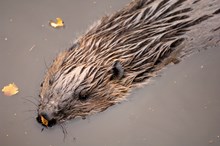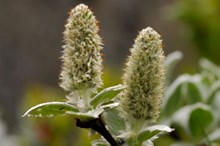04 July, 2014
Environment Minister launches Scottish reintroduction code
Scotland’s Environment and Climate Change Minister Paul Wheelhouse is launching a ground-breaking code for animal and plant reintroductions this afternoon at Scone.
The Scottish Code for Conservation Translocations is believed to be the first of its kind in the world.
The code, and the accompanying guidelines, provides information to individuals or organisations considering animal or plant reintroductions in Scotland. It outlines how to identify benefits and risks, what permits and licences are necessary, how to evaluate the impact on other species, habitats and people, who they need to consult, and what follow-up assessment is required.
The code covers plant, animal and fungal reintroductions and other types of ‘translocations’ – moving a species from one area to another and releasing it for conservation purposes. Reintroductions and other types of translocations can help conserve individual animals and plants and make up for declines caused by habitat loss, climate change, and other human impacts on the environment.
Translocations are just one type of conservation action. In most circumstances, managing animals and plants in their current locations, as well as wider habitat management, will be more cost-effective and lower risk. But there are some situations where conservation translocations are appropriate.
Many translocations are uncontentious. For example, reintroducing an endangered fern on the scree slopes of a Scottish mountain to replace plants devastated by Victorian fern collectors is unlikely to cause problems for those who own land or use the mountain for recreation. But reintroducing an animal or plant which may have a significant impact on their environment, such as a top-level predator, needs much more careful consideration.
Launching the Code at the Scottish Game Fair in Scone, Minister for Environment and Climate Change Paul Wheelhouse said:
“I welcome the new Scottish Code for Conservation Translocations, which has come to fruition following a great deal of collaborative work from those on the National Species Reintroduction Forum. Local and national reintroductions can help wildlife become more resilient, as well as help us to combat the effects of climate change and habitat loss. In the past few years we’ve seen this with well-known species like beavers and sea eagles, as well as lower profile reintroductions like the woolly willow and pine hoverfly. The guidelines are a world first – setting out the types of situation in which translocations may benefit wildlife, people and the environment, enabling thorough and transparent evaluation on a case by case basis.”
Ian Ross, SNH’s chairman, said:
“We want to make assessing and planning a plant or animal reintroduction in Scotland as straightforward and clear as possible. Moving a native plant from one area of Scotland to another may be quite simple, but an application involving a predator like lynx will be quite complicated. The code will be helpful in both these cases to help show those proposing reintroductions how to move through the process more efficiently.”
Douglas McAdam, Chief Executive of Scottish Land & Estates (SLE), said:
"Scottish Land & Estates is supportive of the work of the Forum and the essential voice it gives the land management sector in this important area. We welcome this Code and the approach that Scottish Natural Heritage has taken to include land managers as full partners in these discussions through the Forum. The Code clearly recognises that reintroductions represent both an opportunity and a risk and so this new transparent process to help evaluate the impact on people, businesses and the environment is very welcome."
Simon Milne, Regius Keeper of the Royal Botanic Garden Edinburgh, added:
“There is no simple time-machine to reverse the local extinction of a species. But conservation translocations do offer an important way of restoring lost biodiversity and reducing the likelihood of future losses. The production of this code and guidelines provides the framework for deciding when and how to reintroduce species in Scotland.”
The code was developed by the National Species Reintroduction Forum (NSRF), which is chaired by Scottish Natural Heritage (SNH), and includes representatives from conservation organisations, government departments, landowners and estates, and the farming, forestry, fishing, and game-keeping sectors.
To download the code, see www.snh.gov.uk/translocation-code
The National Species Reintroduction Forum is made up of 20 full members and 7 corresponding members. The 20 full members include the Association of Salmon Fishery Boards, British Association for Shooting and Conservation, Beaver-Salmonid Working Group, Buglife, Confederation of Forest Industries, Cairngorms National Park Authority, Forestry Commission Scotland, Game and Wildlife Conservation Trust, Highland Wildlife Foundation, National Farmers Union Scotland, Royal Botanic Garden Edinburgh, Royal Society for the Protection of Birds, Royal Zoological Society of Scotland, Scottish Countryside Alliance, Scottish Government, Scottish Gamekeepers Association, Scottish Environment Protection Agency, Scottish Land and Estates, Scottish Natural Heritage, and the Scottish Wildlife Trust. For more information, see http://www.snh.gov.uk/protecting-scotlands-nature/reintroducing-native-species/nsrf/
Contact information
- Name
- SNH Media
- snhmedia@snh.gov.uk
NatureScot is Scotland's nature agency. We work to enhance our natural environment in Scotland and inspire everyone to care more about it. Our priority is a nature-rich future for Scotland and an effective response to the climate emergency. For more information, visit our website at www.nature.scot or follow us on X at https://x.com/NatureScot
’S e NatureScot buidheann nàdair na h-Alba. Bidh sinn a’ neartachadh àrainneachd na h-Alba agus a’ brosnachadh dhaoine gu barrachd suim a chur ann an nàdar. Tha e mar phrìomhachas againn gum bi nàdar na h-Alba beairteach agus gun dèilig sinn gu h-èifeachdach le èiginn na gnàth-shìde. Tha an tuilleadh fiosrachaidh aig www.nature.scot no air X aig https://x.com/NatureScot



